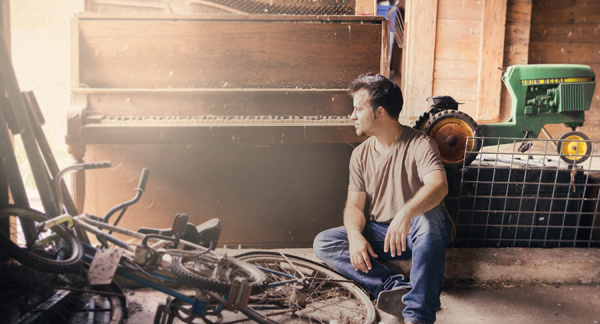An Inside Look at a Ballet Pianist’s Process
Deep in the heart of Music City, USA lives a 23-year-old pianist by the name of Eric Burgett. He is small town, central-Illinois native who moved to Nashville this past August to pursue graduate school at Belmont University as well as a career in performing, songwriting, and teaching. Thus far, he has had the opportunity to teach private lessons and group classes at Belmont, co-write with a few folks around town, attend workshops, and carry out duties as the music director of Glencliff United Methodist Church, a small but mighty church in town. Burgett claims the most exciting part of his weekly schedule is playing piano at the School of Nashville Ballet, where he accompanies in the dance studios, providing music that fits the many dance steps taught by the instructors. Eric provides his view on the art of accompanying dance and shares some of his own experiences.

“I have found that accompanying dancers is by far a more challenging experience than accompanying vocalists or instrumentalists for a few reasons. First of all, the accompanist must really feel the movement of the dancers in his body and visually know what is going on. Knowing different dance steps is pertinent to choosing the right music for a certain combination. If the instructor verbalizes, ‘Plié,’ that is my cue to play something slow and graceful, usually (and preferred) in triple meter. Sometimes the combinations may make more sense in a duple meter, but usually I can tell by the way the instructor demonstrates. Many dance steps exist. I don’t know every single step in the book, but I know enough to provide the right kind of music to accompany the choreography. I’ve made mistakes, but I get back on track and correct myself. I would recommend a book entitled A Handbook for the Ballet Accompanist by Gerald Lishka for a listing of different ballet steps and suggested music to abide by. Being aware of how the ballet-master demonstrates or introduces dance combinations is important as an accompanist. All teachers are different.”
Burgett goes on to state, “Ballet classes are structured in a certain way. First, exercises are completed at the ‘barre,’ the structure that the dancers grasp onto while they work one side of their bodies. After the combination is done on one side, dancers repeat it for the opposite side. Upon completing barre exercises, the dancers remove the bars from the floor and then move to the center of the studio, where they complete exercises without the support of the barre. This segment of the class is called ‘center.’ The third part of a basic ballet class is ‘adagio.’ This includes slow and graceful movements to help dancers develop balance and control. Lastly, the dancers complete ‘allegro’ steps, which are faster than the previous steps in the center work. This portion of the class includes big and small variations of jumps, leaps, and turns. Upon the conclusion of the four basic segments of the class, the teacher and dancers complete a reverence, which is a bow or curtsy in which they pay respect to each other and the pianist. It is a formal tradition in ballet and every ballet class utilizes this. I usually choose a dramatic and gently flowing piece in triple meter.”
About his musical choices, Burgett explains, “Keeping a large amount of repertoire memorized is one of the desired attributes of a dance accompanist, and having plenty of books of ballet scores or piano music will save one’s life during his accompanying experience! Also, being able to improvise is a huge asset as a dance accompanist. I do a great deal of improvising while accompanying any dance class. I may start to play a recognizable piece for he choreography such as ‘The William Tell Overture’ and then add my own flair to fit the rest of the dance combination. If I’m improvising, I never take my eyes off of the dancers’ feet. I try to catch every little movement and compose music that fits them. Doing this makes each dancer’s experience even better. I have been fortunate enough to explore my ability of improvising quite a bit within my years of playing for dancers.”
He concludes, “I began as an accompanist for a small ballet company at a community college up in Illinois. During high school, I performed the entire ballet piano score to the performance of The Nutcracker. It was a great experience! During my senior year of undergrad, I accompanied an upper-level studio class and honed my reading and improvisation skills even more. Soon after my acceptance to Belmont, I auditioned for the dean of the school for Nashville Ballet and showed my interest and talents in accompanying dance. They gladly accepted me as one of their studio accompanists, and I’ve had a blast so far. Accompanying dance is an art within itself. It is a rewarding experience for any pianist.”
For more information, please visit www.ericburgett.com.
photo by Alida Duff Sullivan
